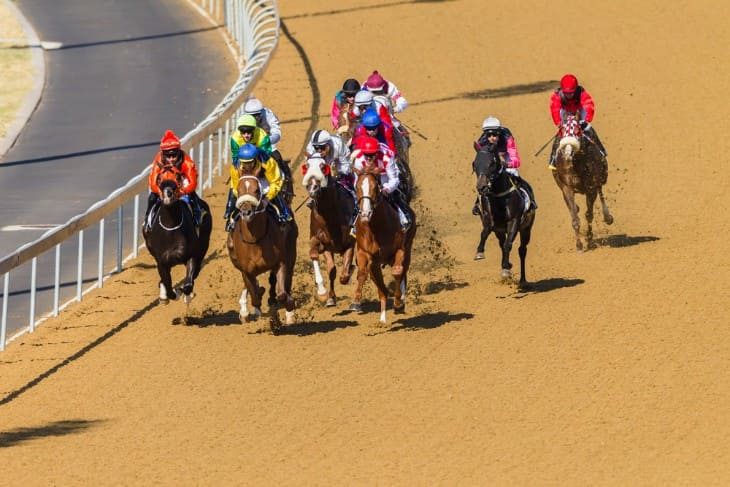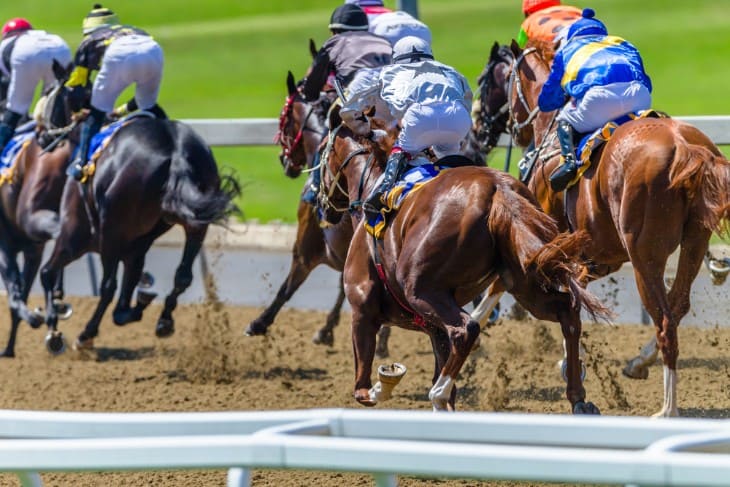Introduction
This flat horse race, which is open to three-year-old Thoroughbreds, takes place annually at Newmarket Racecourse in Suffolk. It is one of the five British Classic Races, alongside the 1,000 Guineas, the Epsom Derby, the Epsom Oaks, and the St. Leger Stakes. The 2,000 Guineas, often referred to simply as the "Guineas," is a mile-long race that serves as a prestigious early-season test for the best colts (male horses) in the racing world.
The race dates back to 1809 when it was first established. It was named after the prize fund, which was originally set at 2,000 Guineas, a considerable sum in that era. Over the years, it has grown in stature and significance, attracting top-class horses, trainers, and jockeys. The 2,000 Guineas is typically held in late April or early May, marking the start of the flat racing season in the UK. Its rich history and the caliber of competitors it attracts make it a captivating event for horse racing enthusiasts and bettors alike.
The Basics of Horse Racing Betting
At its core, horse racing betting revolves around predicting the outcome of a race and placing wagers accordingly. There are various types of bets one can make, ranging from straightforward win bets to more intricate exotic bets like exactas and trifectas.
When delving into the world of horse racing betting, understanding betting odds is paramount. In British horse racing, fractional odds are commonly used. These odds represent the potential profit relative to the amount wagered. For instance, if a horse has odds of 5/1, it means that for every £1 bet, you stand to win £5 if the horse is victorious, in addition to receiving your initial stake back. Conversely, shorter odds like 2/1 indicate a higher likelihood of winning but offer a smaller potential profit.

Preparing for Betting
Before placing any bets on the 2,000 Guineas Stakes or any horse race for that matter, thorough preparation is key to making informed decisions. One of the primary aspects of this preparation is researching the horses that will be competing in the race. Understanding a horse's past performance, known as its "form," is essential. This entails reviewing its recent races, the tracks it has performed well on, and the conditions under which it has excelled. It's important to look beyond just the recent wins and consider factors like consistency and adaptability. Additionally, examining a horse's pedigree, which includes its bloodline and lineage, can provide valuable insights into its potential performance.
Another crucial aspect of preparation is analyzing the jockeys and trainers associated with the horses. Jockeys play a pivotal role in horse racing, as their riding skills and race strategy can significantly impact a horse's chances of success. Experienced jockeys who have a history of winning races often inspire confidence in bettors. Similarly, trainers have a profound influence on a horse's training regimen, fitness, and readiness for a race. A successful trainer can turn an average horse into a contender through effective training techniques and conditioning. In the context of the 2,000 Guineas Stakes, identifying jockeys and trainers with a strong track record can inform your betting choices.
Another vital consideration is the track conditions on the day of the race. The condition of the turf, known as the "going," can vary from race to race and greatly affect a horse's performance. Horses have preferences for different types of ground, ranging from firm to soft. Some may excel on firm, fast ground, while others perform better in wetter, softer conditions. Understanding how these conditions may impact the race and knowing which horses are suited to them can be a valuable asset when making your betting selections. By analysing these key factors and conducting thorough research, you can enhance your ability to make informed bets on the 2,000 Guineas Stakes or any horse race.
Betting Strategies
When it comes to betting on the 2,000 Guineas Stakes or any horse race, having a well-thought-out betting strategy is essential. Two fundamental strategies often employed by bettors are singles and multiples. Singles involve betting on a single horse to win, place, or show. This straightforward approach is relatively low-risk, as you are staking your wager on one horse's performance. However, the potential payouts may be smaller compared to other strategies.
On the other hand, multiples involve betting on multiple horses in a single bet. This can include exactas (selecting the first and second-place horses in the correct order), trifectas (picking the first three horses in the correct order), or even accumulators (combining bets on several races). While multiples offer the potential for higher payouts, they are also riskier, as all selected horses must perform as predicted for the bet to succeed. Understanding the intricacies of these strategies and when to employ them based on your analysis of the race and the horses involved is crucial to successful betting.
Online Betting Platforms
In today's digital age, online betting platforms have become the primary means through which many individuals place their bets on horse racing, including the 2,000 Guineas Stakes. Choosing a reputable online bookmaker is crucial to a safe and secure betting experience. Reputable bookmakers are licensed and regulated by relevant authorities, ensuring that they adhere to strict standards and provide fair odds.
Online betting platforms offer several advantages, including the convenience of betting from the comfort of your home or mobile device. They also provide access to a wide range of horse races, including international events, and offer real-time odds updates and race information. However, it's essential to bet responsibly and within your means when using these platforms, as they can make betting more accessible but also require discipline to avoid excessive wagering.
Firstly, log in to your online betting account using your username and password. After accessing your account, you'll need to navigate to the 2,000 Guineas Stakes race on the bookmaker's website or app.
Next, select the type of bet you wish to place. As discussed earlier, you can opt for singles, multiples, or various exotic bets depending on your betting strategy. Once you've made your selection, the bookmaker's platform will guide you through the process of choosing the specific horses and entering the amount you want to wager. Be sure to double-check your selections and the amount before confirming your bet.
Live Betting at the Racecourse
For those fortunate enough to attend the 2,000 Guineas Stakes in person, the experience of live betting at the racecourse can be particularly exciting. Being on-site provides a unique opportunity to soak in the atmosphere, observe the horses up close, and witness the race in real-time. To place bets at the racecourse, locate the designated betting areas or bookmaker booths. These are typically well-marked and staffed by experienced bookmakers who can assist you with your wagers.
Keep in mind that live betting often comes with the added thrill of last-minute odds changes as the race approaches. You may also have access to additional betting options or promotions specific to the event. However, it's essential to remain disciplined with your betting decisions, even in the excitement of the moment. Set a budget for your live betting activities and stick to it to ensure responsible and enjoyable wagering.

Understanding Payouts
As a bettor on the 2,000 Guineas Stakes, it's essential to have a clear understanding of how payouts work, as they directly impact your potential winnings. Payouts in horse racing are determined by the odds associated with your chosen horse and the amount of your wager. In British horse racing, fractional odds are commonly used to represent the odds of a horse winning. To calculate your potential payout for a winning bet, you can use the following formula:
Potential Payout = (Stake x Numerator) / Denominator
For example, if you place a £10 bet on a horse with odds of 5/1, the potential payout would be:
Potential Payout = (£10 x 5) / 1 = £50
This means that if the horse wins, you would receive your initial £10 stake back plus an additional £40 in winnings. It's crucial to understand that the denominator in fractional odds represents your stake, and the numerator represents your potential profit.
When considering payouts, it's also important to be aware of any tax implications. In the UK, winnings from betting on horse racing are typically tax-free for individual bettors. However, if you are a professional gambler or consistently generate income through betting, you may be subject to taxation. It's advisable to consult with a financial advisor or tax professional for guidance on any tax-related matters.
Conclusion
In summary, betting on the 2,000 Guineas Stakes requires a blend of knowledge, strategy, and discipline. This prestigious horse race, steeped in history, offers an exciting opportunity for bettors to engage with the sport of horse racing. By understanding the race's history, grasping the basics of horse racing betting, conducting thorough research, and employing sound betting strategies, you can enhance your chances of making successful wagers.
Ultimately, betting on the 2,000 Guineas Stakes can be a rewarding and enjoyable pastime for those who appreciate the excitement of horse racing and the thrill of making well-informed wagers. With the knowledge and insights gained from this guide, you are better equipped to participate in this prestigious event with confidence and responsible betting practices.
For more information:







